Error monitoring & reporting for Rails apps
Automatically detect Ruby on Rails exceptions, prioritize what needs attention, and find the answers you need to quickly resolve errors and ship applications with confidence.
Powerful Rails error monitoring and reporting
Built to monitor and report Rails exception on apps of all sizes, BugSnag surfaces valuable information that helps you deliver high quality products to your users.

Get up and running quickly with easy startup and installation
Setting up error monitoring with BugSnag is as easy as installing the BugSnag's Ruby gem. It takes less than a minute to integrate into your Rails application.
Understand the root cause of Ruby errors
When exceptions occur, BugSnag gives you a range of context about the event. Discover where and when the error happened and details about your affected users. Reproduce errors and pinpoint the source of the issue faster.
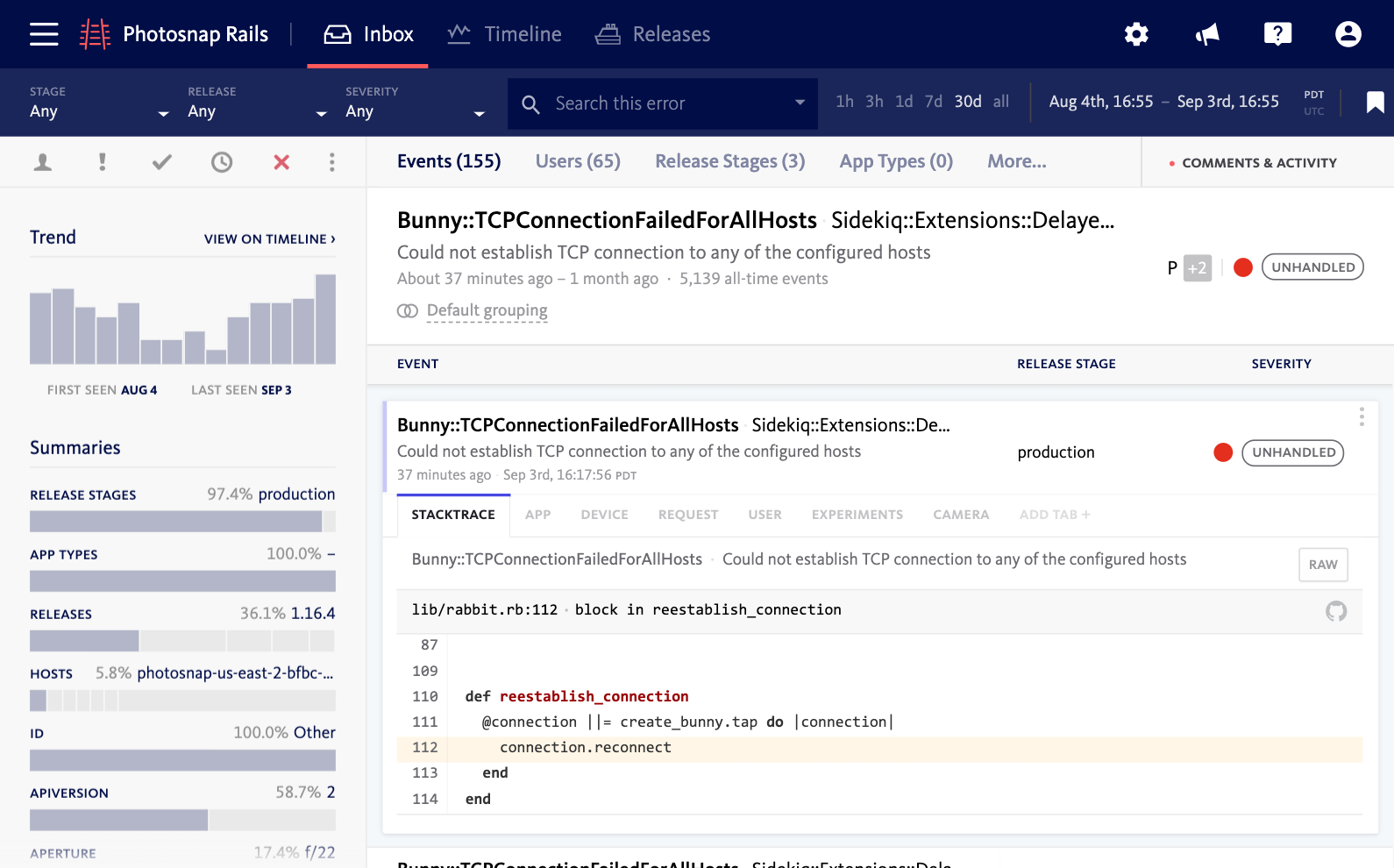
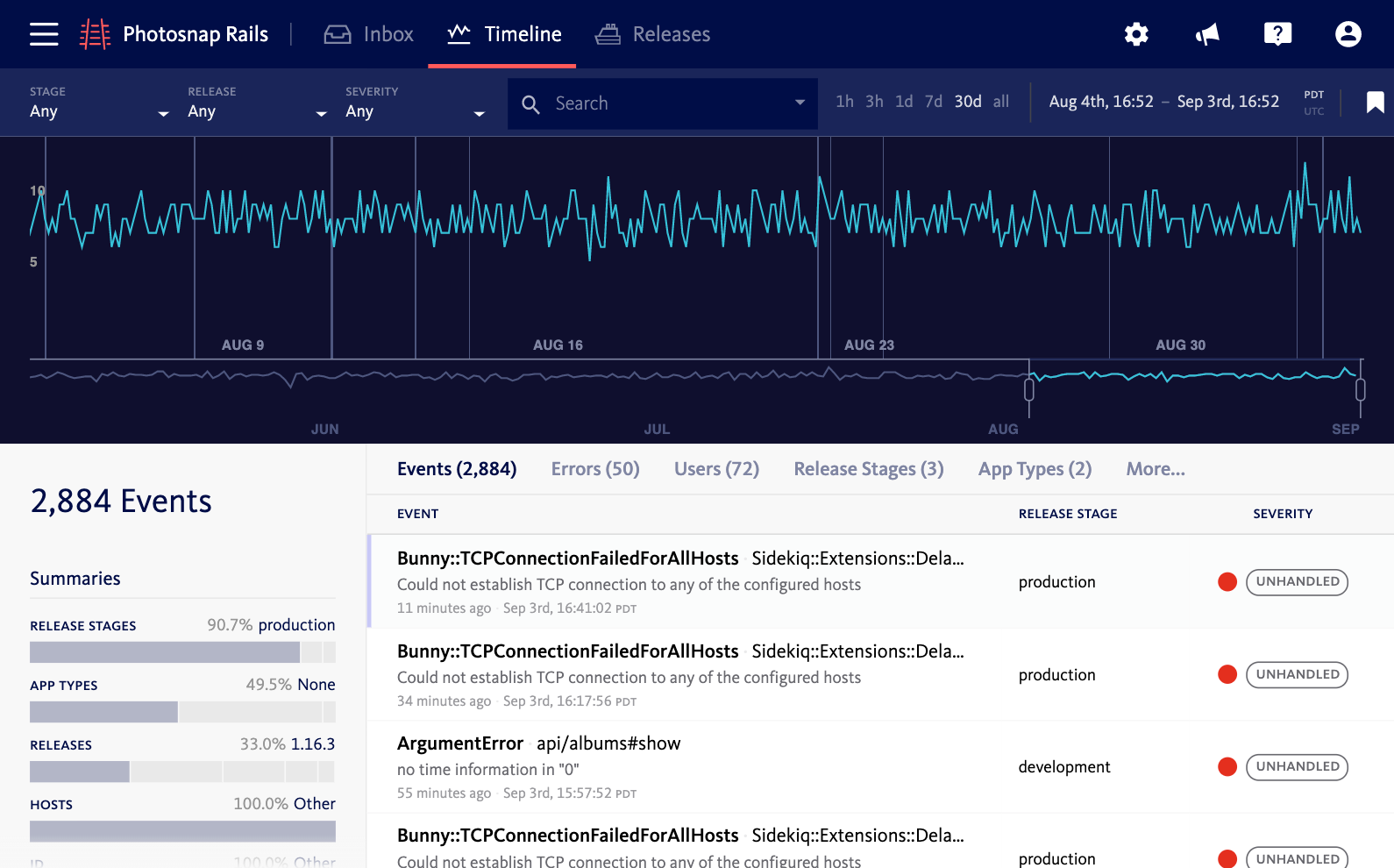
Keep track of all your Rails tools
The BugSnag platform includes integrations for Rake, Rack, Resque, Sidekiq, and DelayedJob, giving you extra context about jobs that fail and where your errors were generated.
Rails insights you can act on
Keep your team focused on fixing the issues that matter most with powerful workflow and prioritization tools.
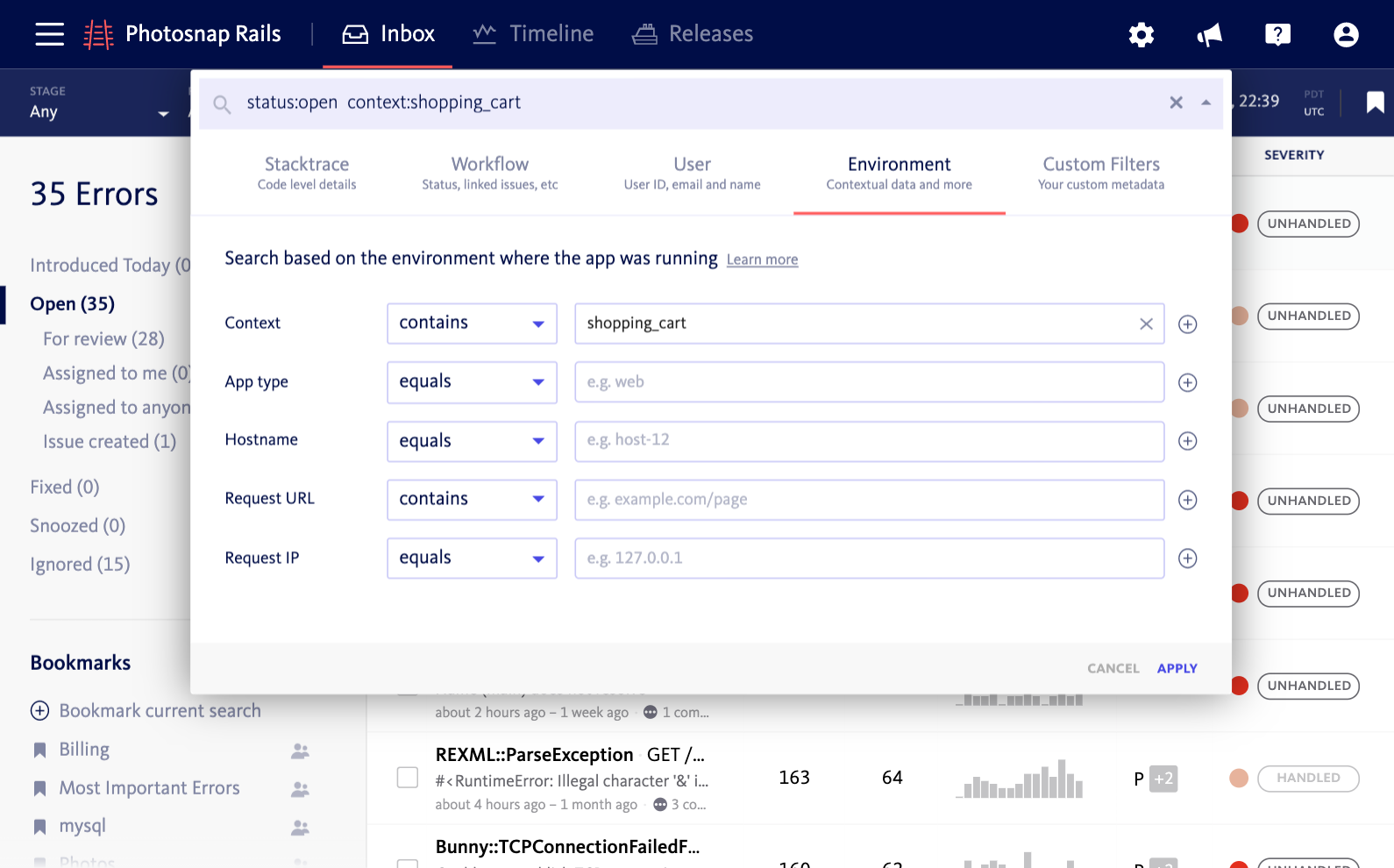
Filter out the noise
Focus on exception that matter with full-text error search and precise error grouping. Sort your Rails errors to find the ones that occur most frequently or that have the greatest impact on your users.
Notify your team instantly
Keep a close watch on your Rails app from places like Slack and Gitter, or with email and SMS notifications. Automatically create tickets in JIRA, GitHub Issues, Pivotal Tracker, and more when a new error is found.
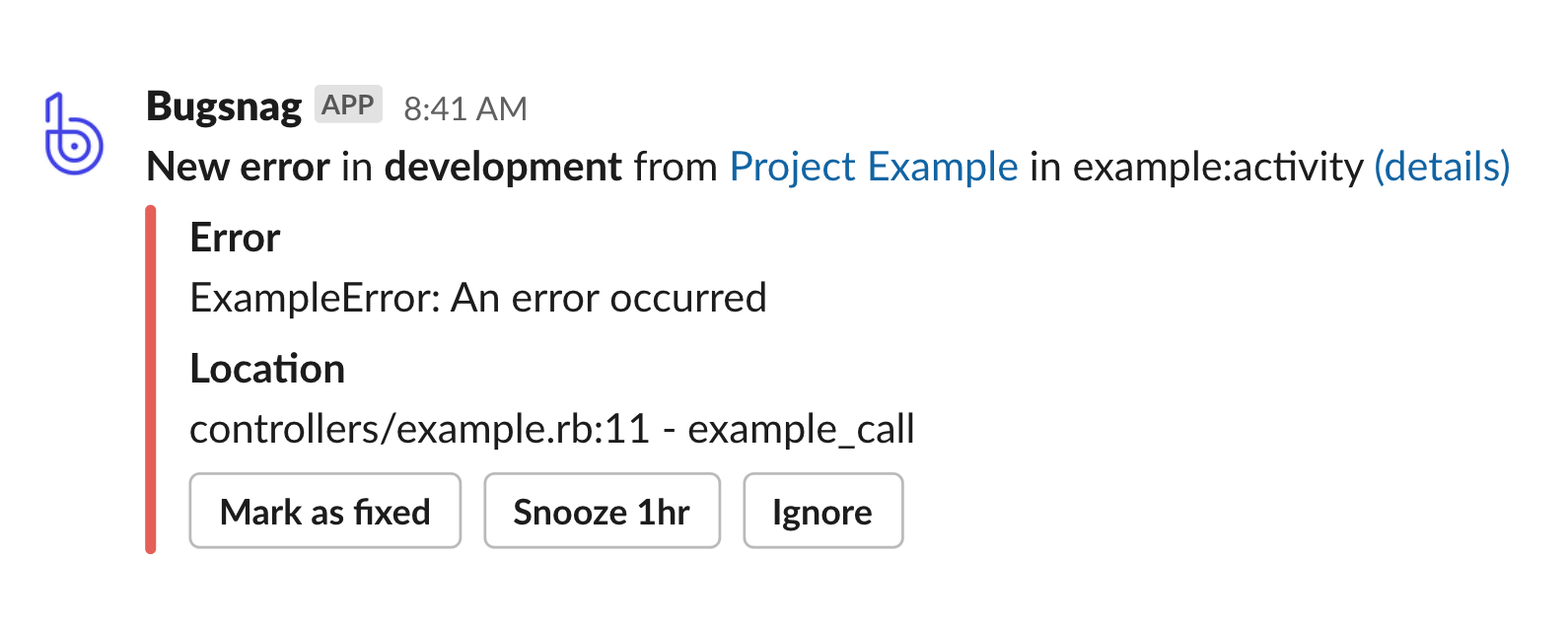
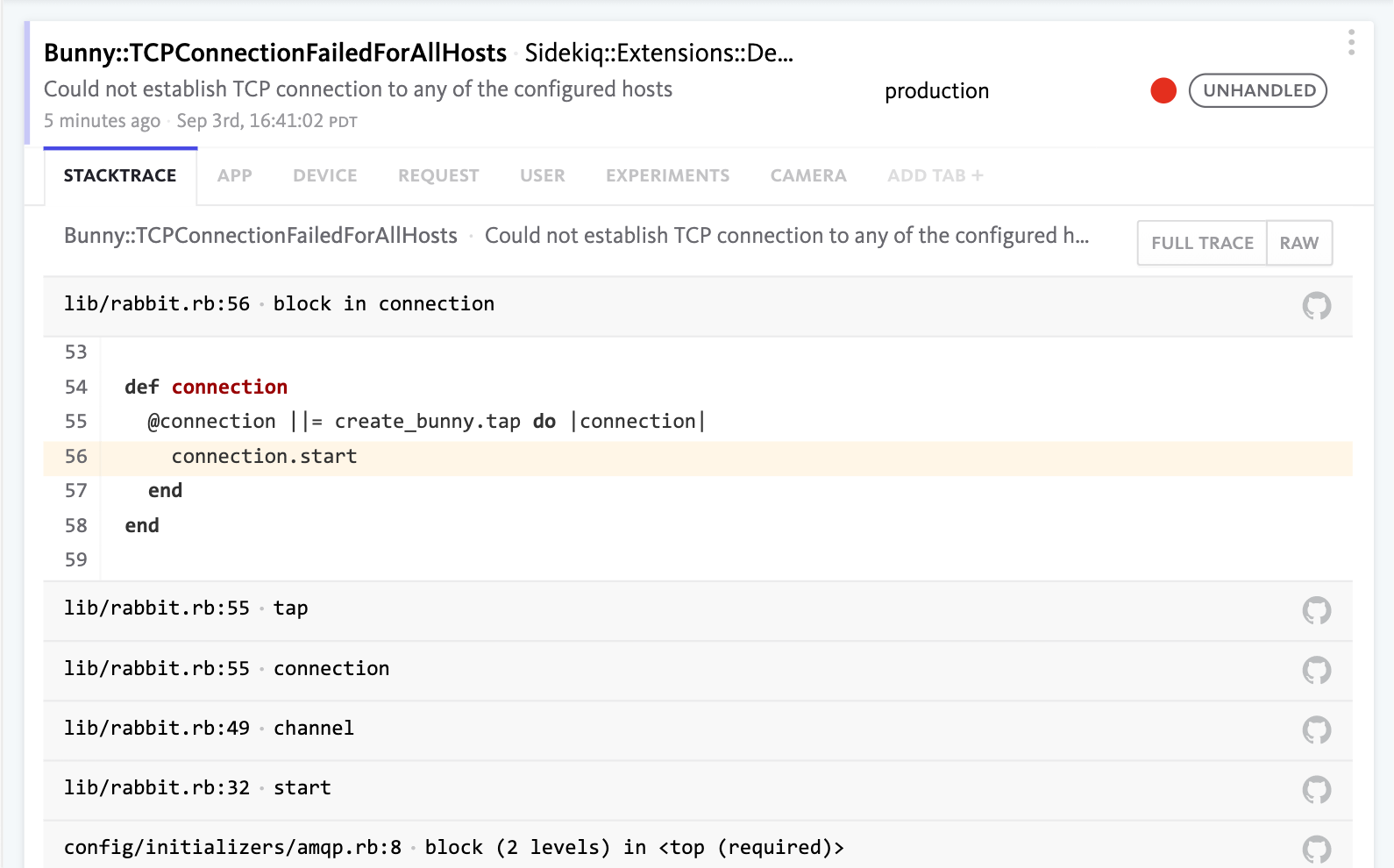
Get down to work
Code included with the full stacktrace helps your team diagnose Rails errors quickly from within your BugSnag dashboard. Assign errors to the right people on your team, discuss what's happening, and stay informed of how errors are progressing from new to resolved.
Level up your error handling
Powerful features like releases, sessions support, and full-stack monitoring mean you can rely on BugSnag for all your unhandled exceptions
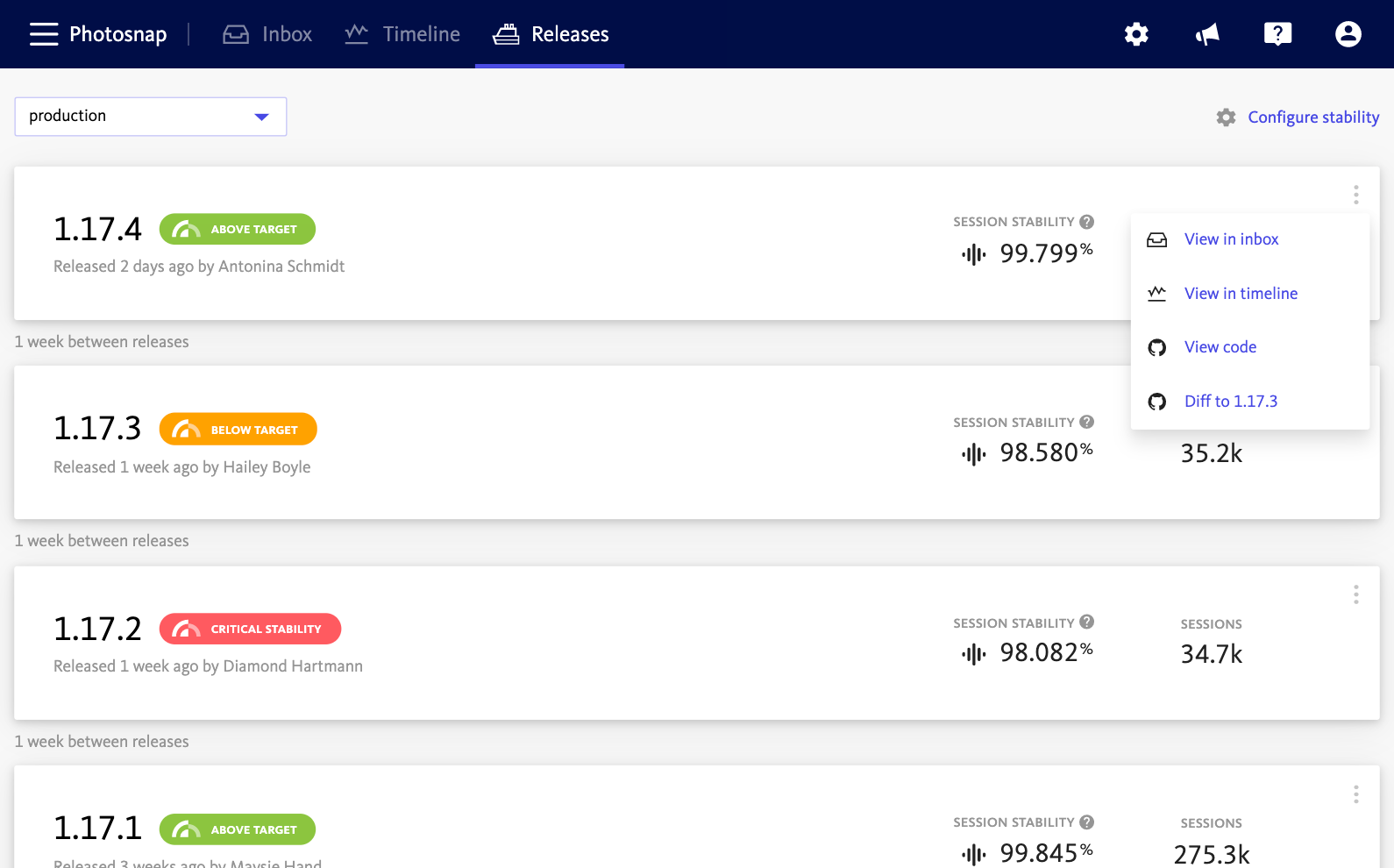
Benchmark releases to improve app health
Use the Releases dashboard to decide if a release is successful or needs to be rolled back. The crash rate indicator shows the percentage of sessions in a release that end in a crash, allowing you to compare release health and track improvements over time.
Track errors by deployment
BugSnag tracks deploys of your Rails apps on Heroku, Capistrano, and more. By sending the source revision or application version, you'll be able to see which release introduced an error and the diff where there's bad code.
Go full-stack
With BugSnag, you can also monitor Javascript errors alongside your Rails app. Get set up with a single script tag that enables cross-browser error grouping, browser and OS breakdowns, code snippets, and source map support, all to help you make sense of crashes.

What customers are saying
Stacey Snyder
Sr. Director of Engineering, Recurly

Software Engineer, Chime

Nahuel Barrios
Engineering Manager

Antonio Niñirola
Engineering Manager

